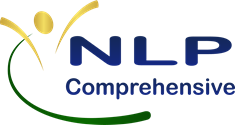You can’t change someone who’s defending their current reality. NLP gives you the keys.
When Insight Isn’t Enough
You’ve been there.
You’re sitting across from a client, a team member, or even a loved one, and they’re stuck. You can see it. You can feel it. The patterns are predictable, the consequences are painful, and the solution? So obvious it might as well be neon.
And yet…nothing moves.
They nod. They agree. They might even thank you.
But change? Not happening.
This is where most people push harder. Talk longer. Offer more logic. Add data, cheerleading, or emotional appeals.
But none of that works if the person you’re speaking to is busy defending the very beliefs holding them back.
Here’s the truth: until the unconscious feels safe enough to change, it will cling to the known, even if it’s miserable.
That’s why NLP is so powerful. It lets you stop pushing against resistance and start softening it, not by forcing insight, but by creating safety through subtle shifts in language and structure.
Let’s look at how.
Resistance Isn’t Personal, It’s Patterned
The first thing to understand is this: resistance is a form of self-protection. It’s the brain’s way of saying, “This change might cost me something.”
Status. Identity. Safety. Autonomy. Belonging.
When a client resists change, they’re often defending the ecology of their current internal map. Not because it’s ideal, but because it’s familiar.
Your job isn’t to bulldoze that map. Your job is to guide them gently to the edge of their current beliefs… and let them see the next step for themselves.
NLP Gives You Three Key Leverage Points
Let’s break down the tools that make that possible:
- Agreement Frames: Join Before You Lead
When you meet resistance, agreement frames let you create psychological alignment without surrendering your position.
Instead of arguing, you validate. You soften the tension. You agree with the logic behind their current frame, even as you open opportunities for people with low incomes to others.
Try this:
“You’re right, it makes sense that you’d want to hold onto what’s worked before. And… what if there’s a way to keep what matters and get more of what you want?”
That “and” is doing heavy lifting. It bypasses the false choice between change and safety. It gives them permission to explore. - Outcome Framing: Make the Change Theirs
Change lands best when it feels like their idea. Outcome framing helps you shift from problem analysis to possibility design.
Ask:
“What would success look like, if you didn’t have to give up anything important?”
“If this problem solved itself overnight, what would be different tomorrow?”
“What’s something you’d love to feel that hasn’t felt possible lately?”
These questions shift attention from defense to desire. From fear to future. And that changes everything. - Sleight of Mouth: Rewire the Meaning Loop
Sleight of Mouth is what happens when belief meets flexibility.
It’s the difference between:
“I can’t change. I’ve always been this way.”
And:
“Isn’t it interesting that the people who’ve always been that way are often the ones who create the most powerful transformations, because they’ve felt it so deeply?”
You’re not arguing. You’re reframing, gently, conversationally, and with respect.
The Shift Happens When the Frame Breaks
In NLP, we don’t “convince.”
We loosen the grip of the old map.
We see a new possibility.
We let them try on the new frame without fear of losing who they are.
That’s why this work is so effective inside Hack Your Brain. Because we teach you to work with the structure of belief, not against it.
One of the most impactful sections of the Practitioner course is the Reframing & Negotiation module, where you learn tools like Agreement Frames and the Conditional Close to guide these conversations fluidly.
Try This: A Mini NLP Prompt for Influence with Integrity
Next time you hit a wall with someone, try this 3-line script:
“You’re right, it’s hard to change something that’s protected you.”
“And it sounds like there’s a part of you that’s ready for more.”
“What would be possible if both those parts worked together?”
That small reframe? It creates movement. You’ve just reduced resistance without a single directive.
From Push to Permission
You can’t force a breakthrough. But you can set the stage for one.
When you apply NLP as we teach it —within real-world conversations, incorporating genuine human nuance —you stop trying to change people.
Instead, you invite them into a new experience of themselves.
And that’s the kind of influence that lasts.
Ready to learn how to do this for real?
Inside the Hack Your Brain NLP Practitioner Course, you’ll master tools like Agreement Frames, Outcome Framing, and Sleight of Mouth, not just as concepts, but as language patterns you can use in every conversation that matters.
Whether you’re a coach, a leader, or a human navigating tough relationships… this work will change the way you show up.
And when you shift? They do too.

